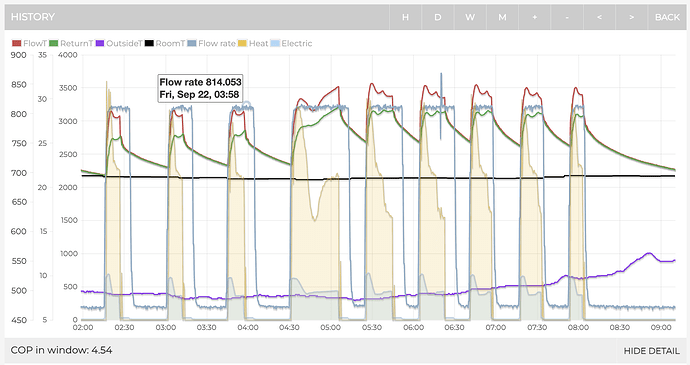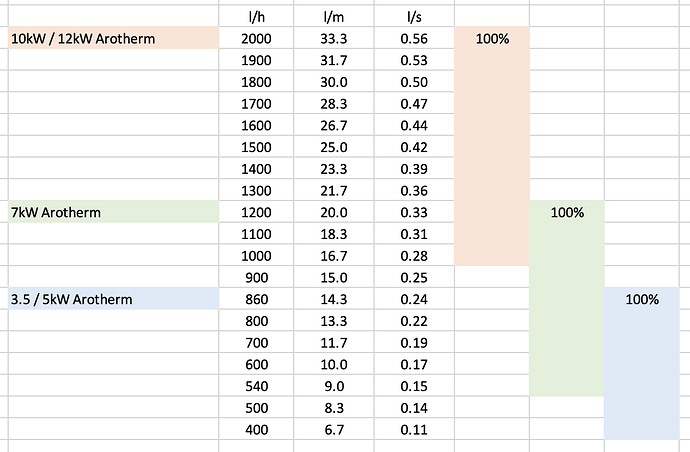My new heatpump system was installed with a 25 litre buffer tank. I’m pretty sure I don’t need it, but at the time of quoting, the installer, and Vaillant seemed to insist on including one. I could have insisted myself to leave it out, but I’d probably have issues with the installer later if I needed help within warranty. Ultimately, I decided if I was to ‘prove’ the buffer’s effectiveness either way I’d include proper monitoring of both the ‘whole system’ and the ‘heating’ circuit separately, i.e. both sides of the buffer. I admit to being a keen follower of the whole COP/efficiency agenda (read: classic nerd who should get-out more) so I want to ‘tweak’ the system within given limits to come to a definitive conclusion as to whether a buffer on a singe zone ‘open’ heating system with sufficient volume has any benefits which justify its existence. If not, I’ll remove it, and the sec. pump, and take my COP ‘to the moon’ with the rest of you ‘bufferless’ lot.
This post isn’t about my decisions to date, my installer or Vaillant. It’s about seeking input to how I can make the setup work as efficiently as possible while maintaining comfort. As I suspect, the measured heating COP won’t be breaking any records, as I’m only using one electric meter which measures all input.
So, first question! Please see my system layout sketch:
To minimise heat loss in the buffer, the flow rate in and out need to be matched (i.e. A=B, C=D on sketch). My secondary pump (Grundfos UPS3) is controlled by the Vaillant Arotherm+ 5kW controls, but only on-off. My understanding is that it has a PWM input to enable modulation, but it’s not currently used. The Heatpump’s (primary) pump is modulated by the control regime, but can also be ‘limited’ to a %value in the settings. Over the heating season I’ll be monitoring both flow rates and trying to get as good a match as possible, but does the assembled brains-trust have any ideas about how this flow-rate match can be better achieved? I will probably put together a temperature monitor (ESP32/ESP Home/Home assistant) to measure temps at A,B,C and D which will show-up how, and when circulation in the buffer occurs, and hopefully what happens in low-load conditions, i.e. below minimum heatpump output, and also during defrost cycles. My understanding is that the buffer, in steady-state heating conditions, even with equal flow rates either side, can’t be as efficient as ‘no buffer’ as the temperature at A will always exceed B, therefore loss. However, if the buffer becomes useful in low-load / defrost conditions, meaning the heatpump does less work, let’s see if we can quantify this using the monitoring.
Any input or comments so far, please?
I’ve included the ‘whole system’ monitoring on heatpumpmonitor.org and the secondary (heating) monitoring is linked in the notes from there, but here are the direct links:
Whole system monitoring
Secondary heating monitoring
It’s early days, so please disregard much of the historic measurements (to 13/9/23). Things will settle-down as we get into colder weather, I finish my radiator balancing and find the right weather comp. curve.
Cheers, Andy


